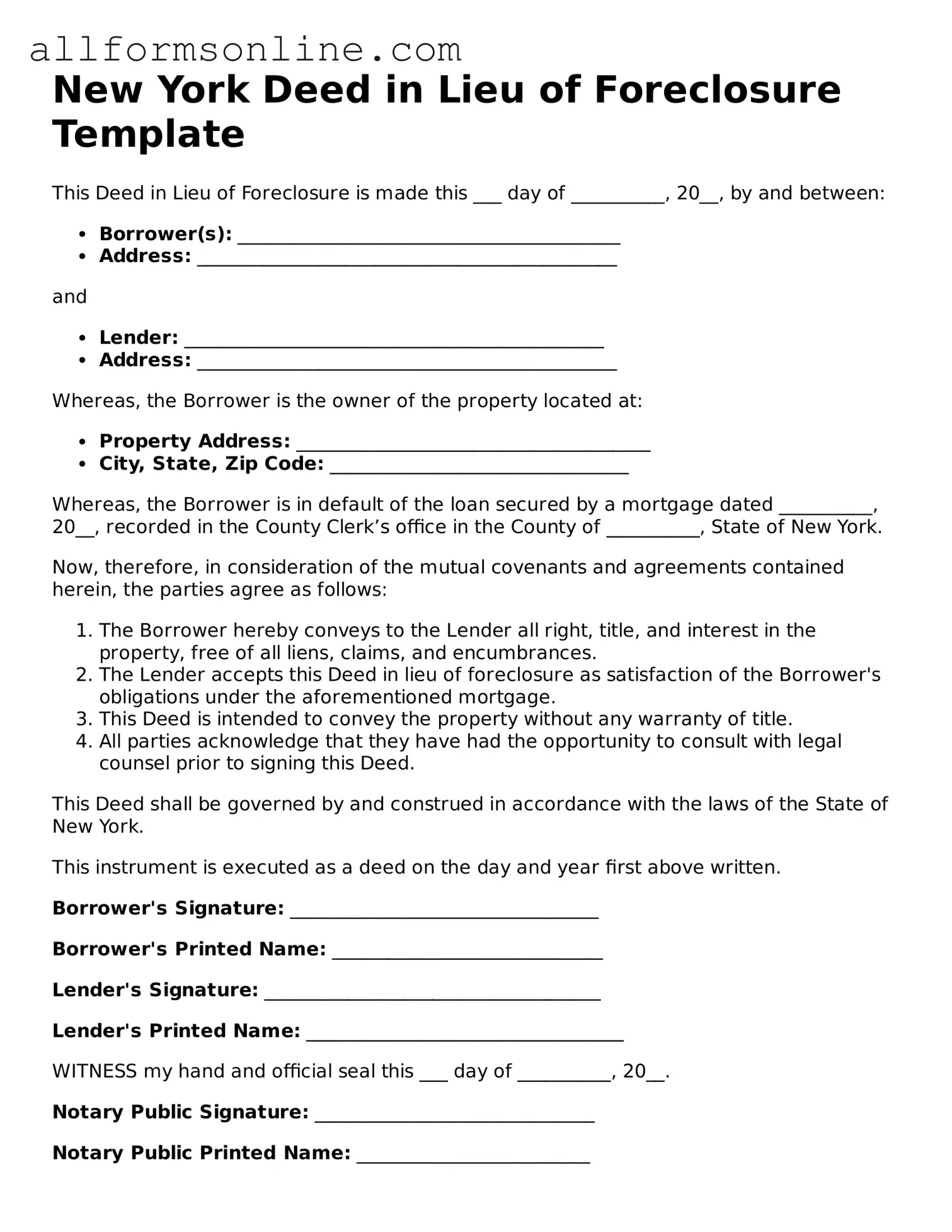What is a Deed in Lieu of Foreclosure?
A Deed in Lieu of Foreclosure is a legal process where a homeowner voluntarily transfers the title of their property to the lender to avoid foreclosure. This option is often considered when homeowners find themselves unable to keep up with mortgage payments. By choosing this route, the homeowner can settle their debt and avoid the lengthy and stressful foreclosure process. It allows the lender to take possession of the property without going through court proceedings, which can save time and money for both parties.
What are the benefits of a Deed in Lieu of Foreclosure?
One of the primary benefits is that it can help homeowners avoid the negative impact of a foreclosure on their credit score. A Deed in Lieu typically results in less damage to credit ratings compared to a foreclosure. Additionally, it can provide a quicker resolution for both the homeowner and the lender. Homeowners may also have the opportunity to negotiate terms with the lender, such as the possibility of being released from any remaining mortgage debt. This option can lead to a more amicable exit from homeownership.
Are there any risks associated with a Deed in Lieu of Foreclosure?
While there are advantages, there are also risks to consider. Homeowners may still face tax implications, as the IRS may consider forgiven mortgage debt as taxable income. Furthermore, not all lenders accept Deeds in Lieu, so homeowners should confirm their lender’s policies. It’s also important to understand that giving up the property means relinquishing all rights to it, which can be a difficult decision for many. Consulting with a legal or financial advisor is advisable to fully understand the implications.
How does the process work?
The process generally begins with the homeowner contacting their lender to express interest in a Deed in Lieu of Foreclosure. The lender will then assess the homeowner’s financial situation and the property’s value. If both parties agree to proceed, the homeowner will sign the Deed in Lieu document, transferring ownership of the property. The lender may also require the homeowner to provide a hardship letter explaining their financial difficulties. Once everything is agreed upon and signed, the lender will file the deed with the local government, officially taking ownership of the property.
Can I still live in my home during the process?
